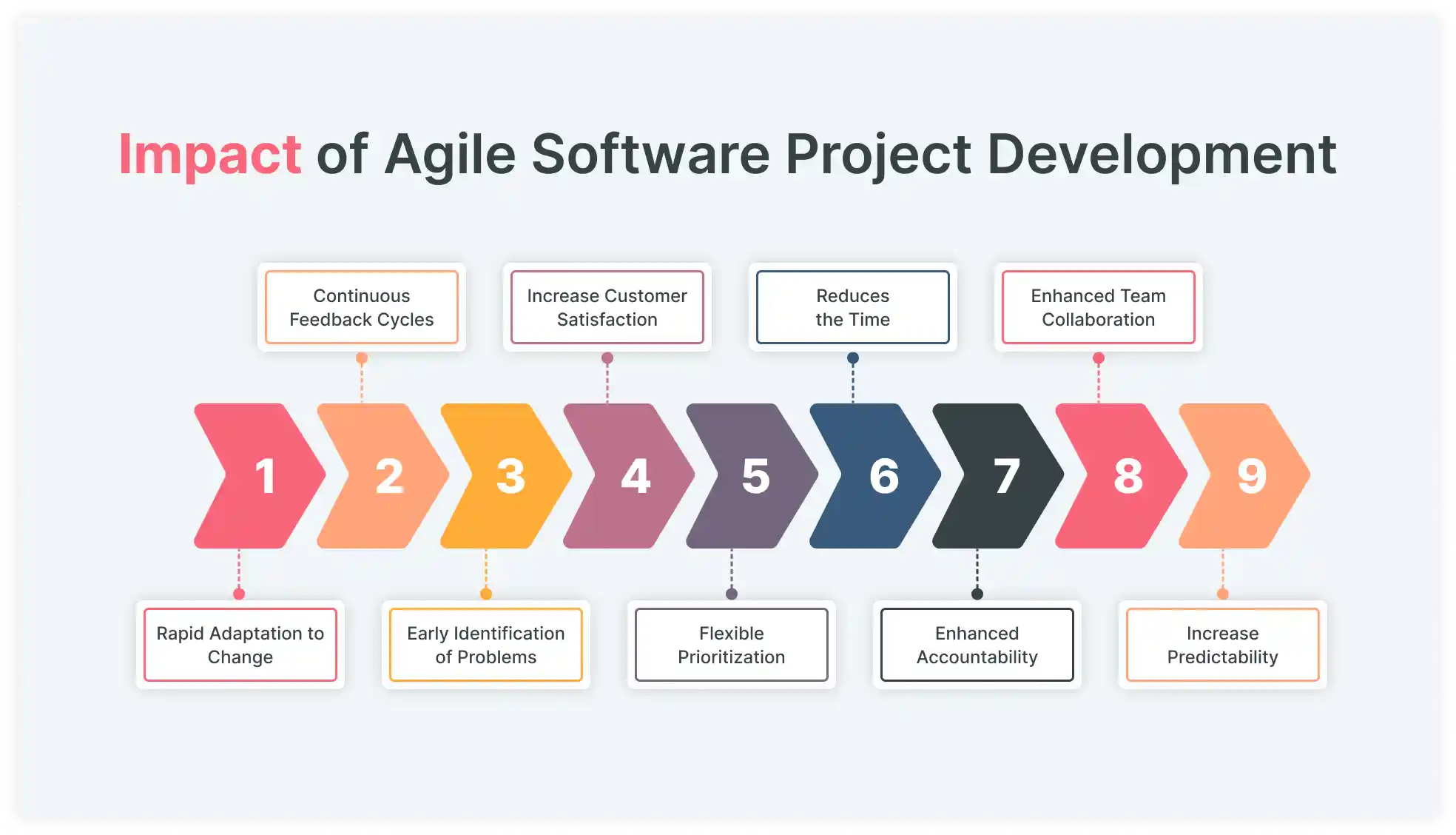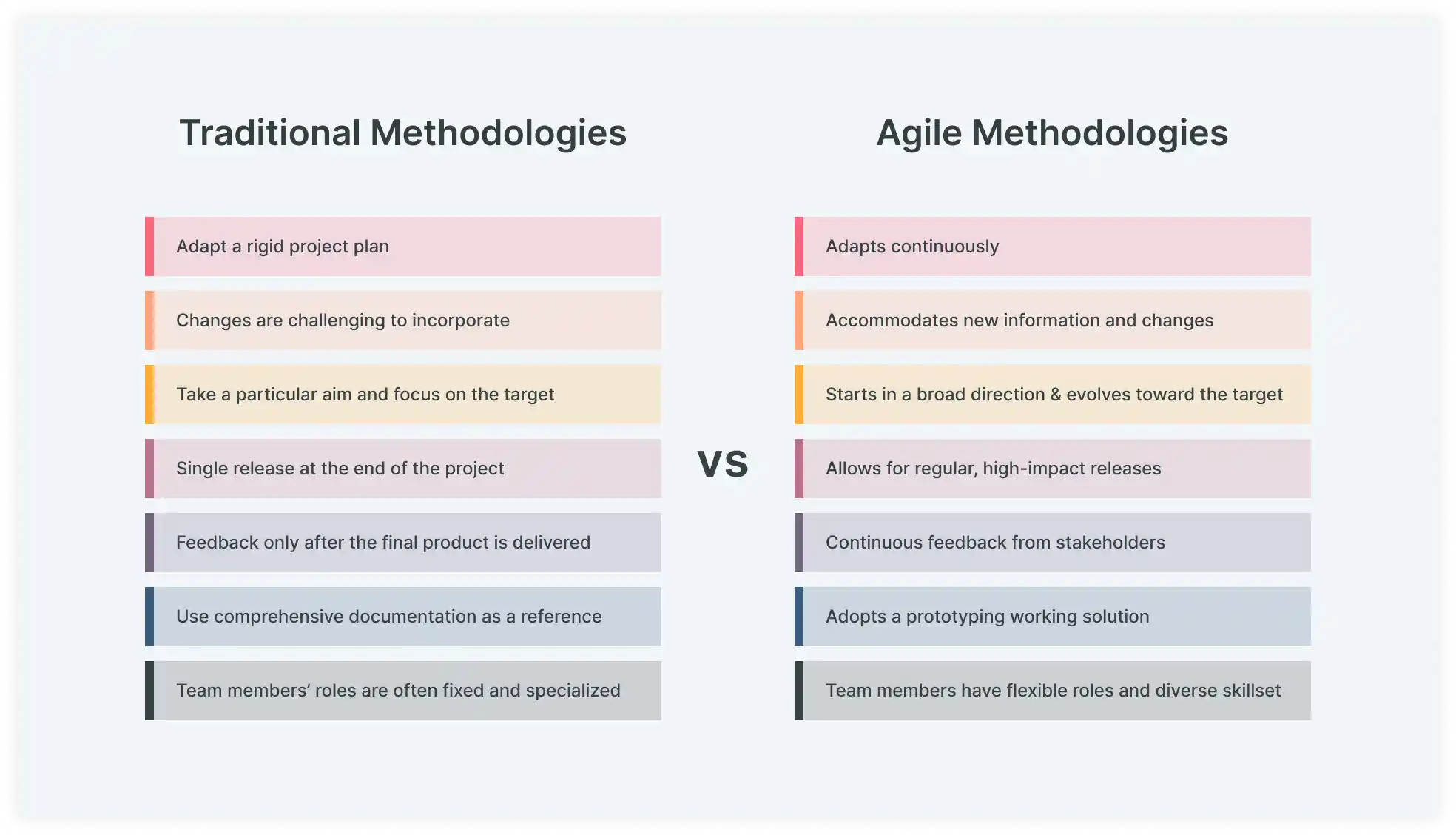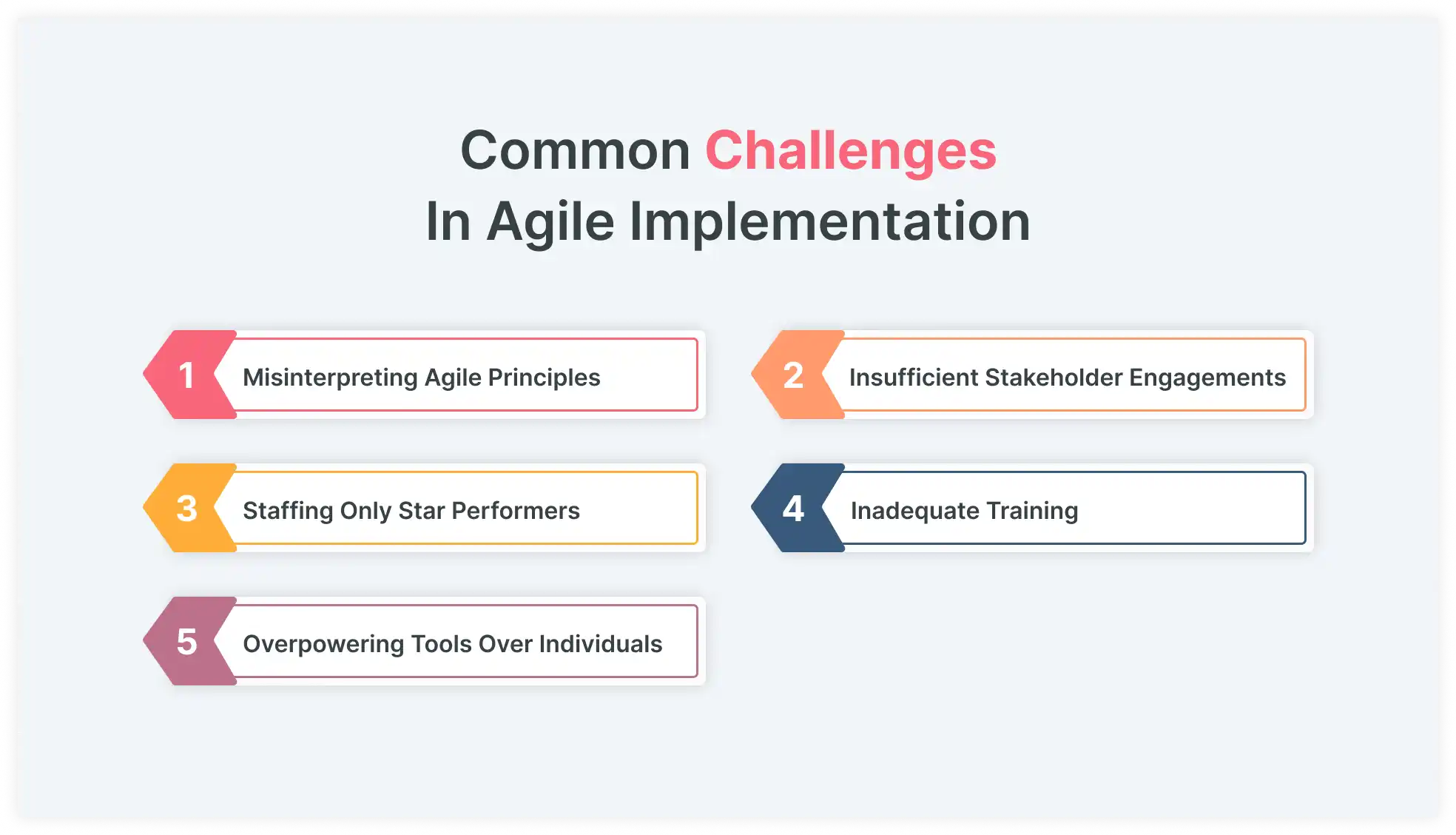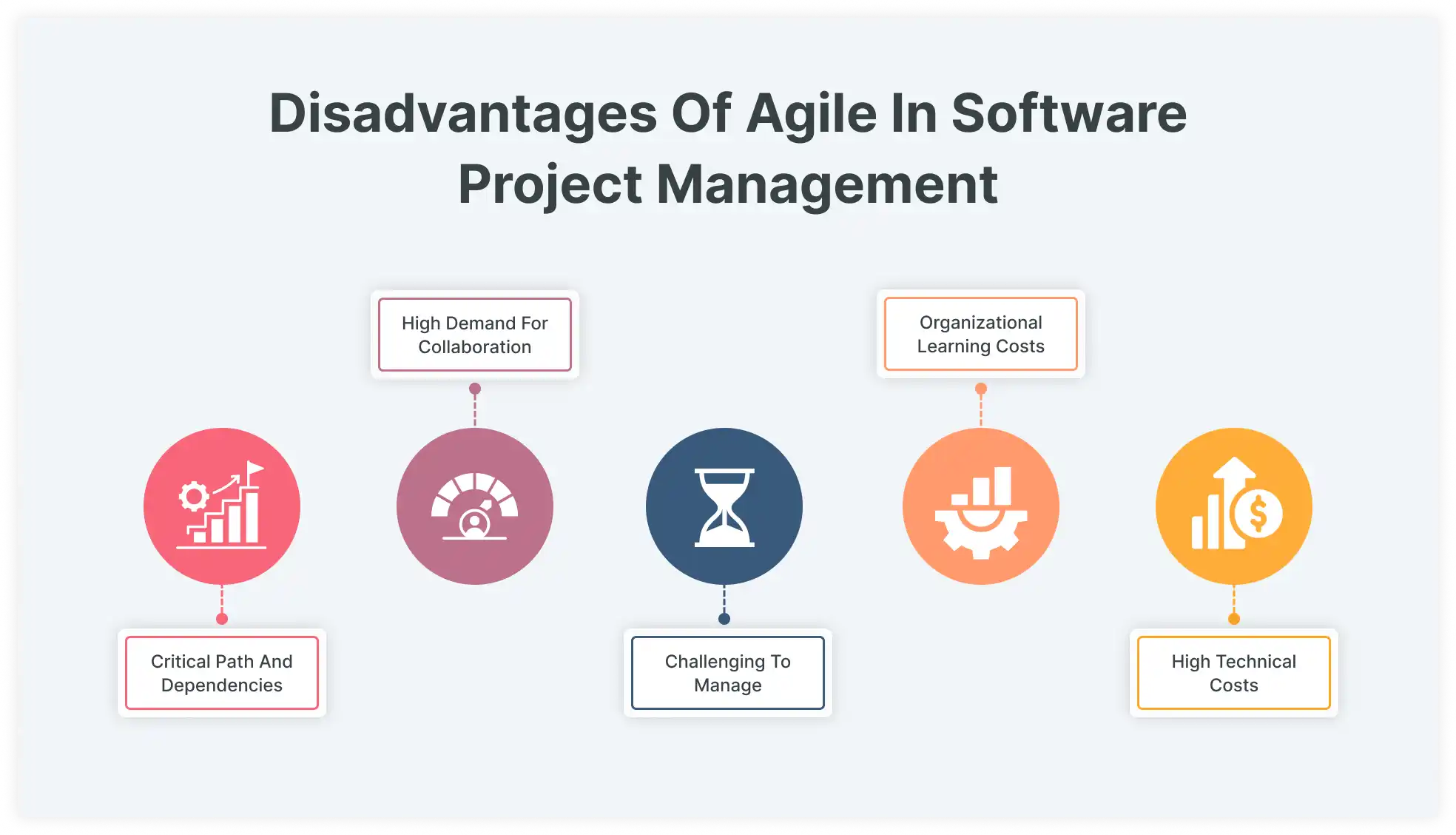
In a rapidly changing era of technology and demands, organizations might wonder why they should use agile methodology to manage software projects.
Today, agile methodology is frequently used by teams who want to execute projects quickly and efficiently. However, some unforeseen barriers and practices need to be improved in the agile initiatives.
This comprehensive guide will discuss the essential components, key techniques, and importance of agile methodology in project management and highlight the roles and responsibilities of agile project managers.
What is Agile Methodology?
Agile means “being able to move quickly and easily.’ Iterative refers to the ‘repetition of a sequence of processes.’’
Agile methodology is an iterative approach to fast-track software development projects. It allows teams to adapt to rapidly changing or unpredictable environments and deliver a project continuously rather than at once.
Unlike traditional project management, agile methodology focuses on flexibility, team collaboration, and customer feedback. It manages software development based on 12 principles outlined in the Agile Manifesto.
How Does Agile Impact Software Project Development?
Agile methodology completely transforms the way software development projects are managed.
Here is how agile management helps software project teams.

1. Rapid Adaptation to Change
Software teams frequently encounter new information and priority changes in the project. Suppose a client wants to integrate AI-driven features into the product. Agile methodology allows teams to quickly adjust to changes and ensure the final product meets evolving needs.
2. Continuous Feedback Cycles
A significant part of agile methodology is asking the stakeholders to identify problems, gaps, and errors. The team then responds to these changes and implements them in the plan. This feedback cycle continues throughout software development, and teams can address potential issues before they escalate.
3. Control Risks by Early Identification of Problems
Identifying problems early in development helps project teams to prepare and encounter any forthcoming risks. An intact agile methodology may help catch code defects before they impact other important areas of development.
4. Increase Customer Satisfaction
Unlike old methods, agile engages customers in the project development process. Agile frameworks are based on principles that can positively impact customer satisfaction and loyalty. Here are some ways agile increases customer satisfaction:
- Delivering value early and often
- Collaborating with customers
- Responding to customer demands
- Improving the product continuously
5. Flexible Prioritization to Maximize Value
Agile involves planning, estimating, and allocating time and resources based on the importance of individual project tasks. By pursuing an agile methodology, project teams can prioritize the most important tasks and maximize the product's value.
6. Reducing Time to Market for Competitive Advantage
Agile methodology reduces the time required by software companies to market the product and gain marketing advantages by:
- Stepping early in the market
- Accelerating revenue generation
- Extending the lifespan of product in the market
7. Enhanced Accountability through Transparency
Transparency is an essential component of the Agile software development process. The agile methodology comprises daily meetings and sprint reviews that enhance accountability among all team members and create trust and open communication.
8. Enhanced Team Collaboration and Productivity
Agile methodology uses communication tools and offers practical tips and strategies. Implementing such practices enables the teams to streamline processes, improve communication, and achieve tremendous project success.
9. Increase Predictability
Agile methodology is structured to deliver work in smaller batches with regular sprints. This approach makes it easier for teams to estimate timelines and create more reliable predictions for future deliverables. Predictability also involves teams meeting stakeholder expectations and commitments.
Traditional vs Agile Software Project Management: What's the Difference?
Here are the common points that differentiate an agile methodology from a typical and traditional project management methodology:

What are Key Agile Frameworks and Techniques in Software Project Management?
The set of organization and workflow patterns followed in project management is called a framework. Agile frameworks combine continuous planning, testing, and integration in software project management.
A few essential agile practices and techniques to deliver high-quality products are as follows:
1. Scrum
Scrum helps teams organize software development plans into short, focused ‘sprints’ to deliver small projects stepwise.
2. Kanban
Kanban utilizes a visual board to track tasks, ensuring a smooth workflow while avoiding overburdening individual team members.
3. Lean
Lean is an agile framework that maximizes project value and delivers a high-quality product. It eliminates any unnecessary steps in software development.
4. Extreme Programming (XP)
Extreme programming (XP) is a software development technique that involves pair programming and test-driven development in the coding process. It helps the software team catch bugs early through frequent releases and continuous feedback.
What are the Essential Components of Agile Project Management?
_1731658798.webp)
The following essential components help agile teams plan, prioritize, execute, and continuously improve throughout the project lifecycle.
- Product Backlog and Prioritization
- Roadmaps and Iterative Planning
- Requirements Gathering and Refinement
- Agile Metrics and Measurement Tools
- Sprint Planning and Execution
- Backlog Grooming/Refinement
- Sprint Review and Retrospective
- Continuous Integration and Testing
- Stakeholder and Team Collaboration
- Feedback Loops and Regular Adjustments
What are Agile Metrics and Measurement Tools to measure progress in Software Project Management?
Here, we enlist key agile metrics and measurement tools to measure team performance, workflow efficiency, and product quality.
- Velocity
- Burndown Chart
- Burnup Chart
- Cycle Time
- Lead Time
- Cumulative Flow Diagram (CFD)
- Throughput
- Escaped Defects
- Sprint Burndown and Burnup Charts
- Net Promoter Score (NPS)
What are the Common Challenges in Agile Implementation?
The goal is to be agile and implement agile initiatives effectively.
Some typical mistakes teams make when adopting an agile methodology to manage software projects are discussed below.

1. Misinterpreting Agile Principles
Agile works best when company culture supports flexibility and collaboration. Teams often misunderstand agile as merely a process, which leads to rigid implementation and defeats the purpose of agile principles.
2. Insufficient Stakeholder Engagements
Agile prospers on continuous feedback. Limited stakeholder engagement hinders progress, as teams need clear directions, goals, and necessary insights into the project.
3. Staffing Only Star Performers
Some organizations assign star performers. However, an effective agile team requires a balance of roles and skills among team members.
4. Inadequate Training
Agile requires a shift of mindset from time to time, and in such a fast-paced environment, teams may struggle without proper education and training for all team members.
5. Overpowering Tools Over Individuals
The tools in agile are there to support the people. Teams should avoid strict adherence to tools and focus on a human-centric approach.
What are the Roles and Responsibilities of an Agile Project Manager?
Whatever agile frameworks an organization uses to support software development, an agile project manager must analyze the team’s progress. Following are some of the project manager’s key responsibilities:
- Create a collaborative team environment
- Promote continuous learning and support
- Provide resources to enhance developer productivity
- Manage roadmaps
- Communicate effectively with the stakeholders
- Handle scope changes in the project
- Agile project estimating
- Agile reporting
- Backlog management and grooming
Are there any Disadvantages of Agile in Software Project Management?
Agile methodology offers substantial benefits compared to traditional project management approaches.
However, the following aspects can require more effort from teams:
- Critical path and dependencies
- High demand for collaboration
- Large teams are challenging to manage
- Organizational learning costs
- High technical and engineering costs

Summing up
Becoming agile in dynamic software development is now more important than ever. However, moving to agile can be challenging. With a better understanding of agile components and utilizing key frameworks and techniques, teams can continuously deliver high-quality projects.
Overall, agile project management supports flexibility, team collaboration, and customer feedback while offering benefits throughout the software development process.



















